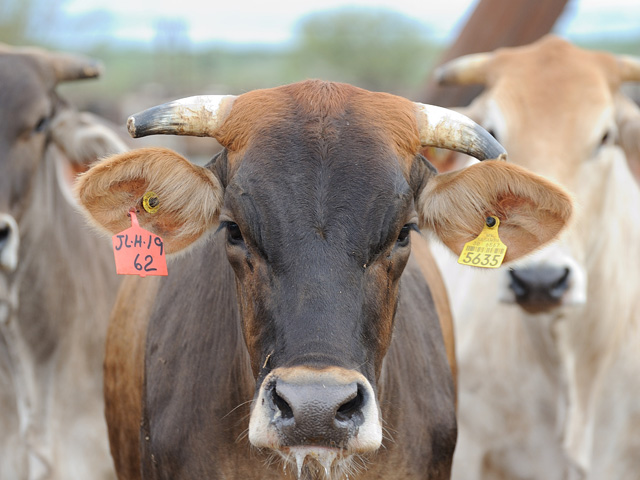Straight Answers on Beef
Cattle Producers Can Share the Facts
Consumers have a lot of questions about the production of beef. Producers should be able to answer those questions with facts and personal insight.
One person with answers is Chief Sustainability Officer Sara Place at Elanco Animal Health. She has addressed the issue of sustainability and marketing often, using scientific evidence to support her explanations. How does Place address some common consumer questions when it comes to the production of beef? See these answers from a forum provided through the Animal Agricultural Alliance.
1. DO WE EAT TOO MUCH BEEF?
There's an assumption Americans eat too much meat. Things are repeated until they become common knowledge, but that doesn't mean they are correct. Looking at trends from 1970 to 2016, the U.S. population increased by 100 million. Beef production has increased but not kept up with that growth, with per capita availability today 33% lower than in 1970. Chicken, on the other hand, is up to 130%. Looking at energy supply, over 70% of American's calories today come from plant-sourced foods.
P[L1] D[0x0] M[300x250] OOP[F] ADUNIT[] T[]
2. DO LIVESTOCK EAT WHAT COULD BE FOOD FOR HUMANS?
This idea of feed-food competition says if we take livestock out of the system, more plants would be available for humans to eat directly, and this would increase food security. The truth is that livestock animals are up-cyclers. They take something of little to no value and make it into a higher value product. They take less digestible plants, with fewer or no concentration of nutrients, and upgrade them into animal source food protein. This is essentially a solar energy capture process. We can't digest cellulose, for example, but cattle can. When we look at grain-finished beef, 82% of what they eat is forage, both grazed and harvested forage; 7% are byproducts; only about 11% is grain. Every 0.6 kg of human edible protein eaten by cattle returns 1 kg of human edible protein in the form of meat or milk. This makes cattle net contributors to protein available for human consumption.
3. SHOULD LAND USED FOR ANIMAL AGRICULTURE BE GROWING CROPS?
We can't just talk about land as acres, that's a low information value metric. We have to think about the sustainability of land for different uses, how to best use a particular piece of land. With grazing, you see a lot of multi-functional land use, where the grazing supports bio-habitat, wildlife habitat. We see livestock integrated with crop production, animals use crop residues and manure goes back to the land. It's important to know you can have an acre of ground today that produces both the bun and the burger. It's not either-or, but how they fit together.
4. DOES EATING LESS MEAT AFFECT CLIMATE CHANGE?
You can't eat your way out of climate change. You could choose to eat a ribeye every day, or tofu every day, and it won't be a big driver of change. People are omnivores, they want animal protein, but they will consume plant-based protein. There is no evidence that serious displacement of animal sources of protein by plant-based sources would make a meaningful impact to climate change. A lot of companies are trying to tell us marketing stories, but we don't see a lot of substantial shifts in demand. A White and Hall Study in 2017 said if we all went vegan and eliminated animal agriculture, we'd reduce greenhouse gas emissions by 2.6%. That is not realistic, and it would leave us without enough essential micronutrients. Overall, the removal of animals from agricultural production would only result in diets that are nonviable in the long or short term to support the nutritional needs of the population without nutrient supplementation.
Victoria Myers can be reached at vicki.myers@dtn.com
Follow her on Twitter @myersPF
(c) Copyright 2021 DTN, LLC. All rights reserved.






